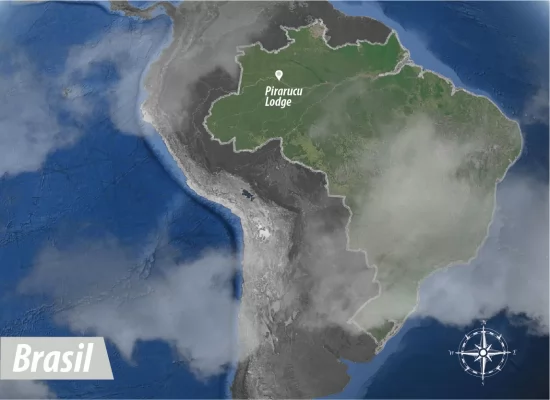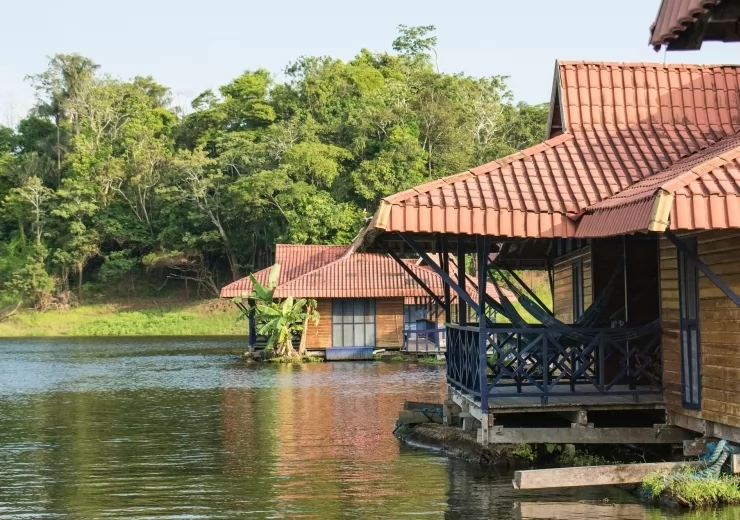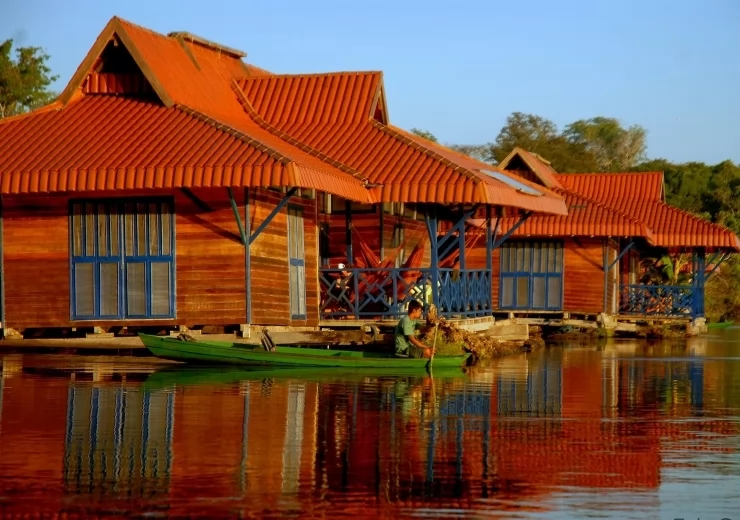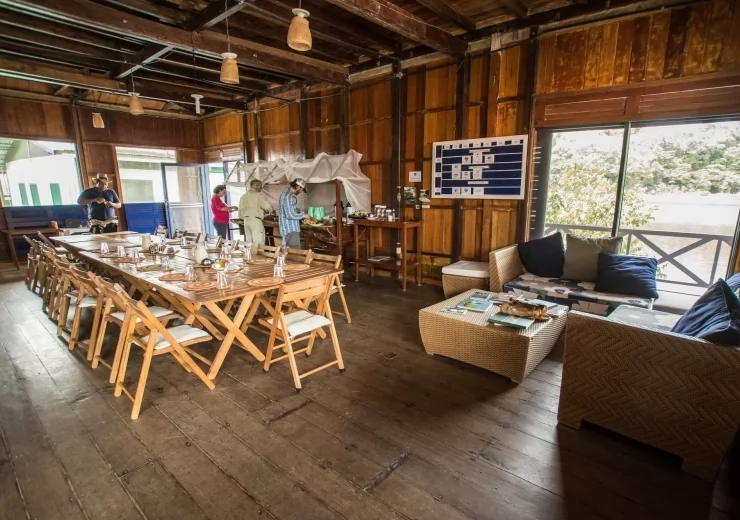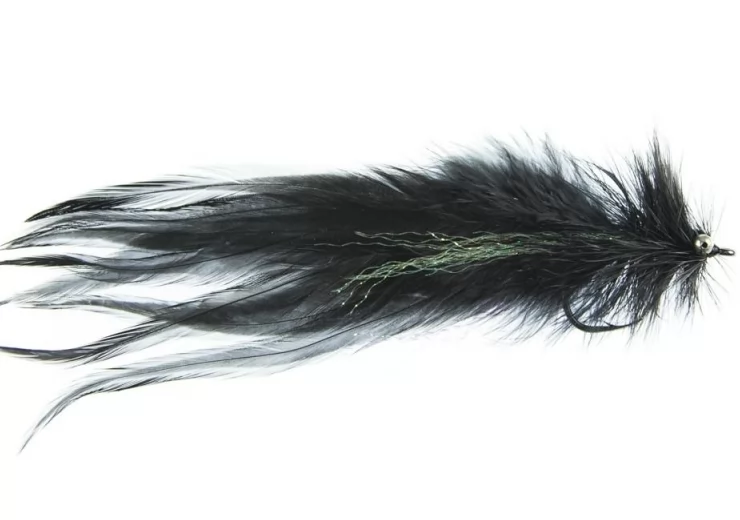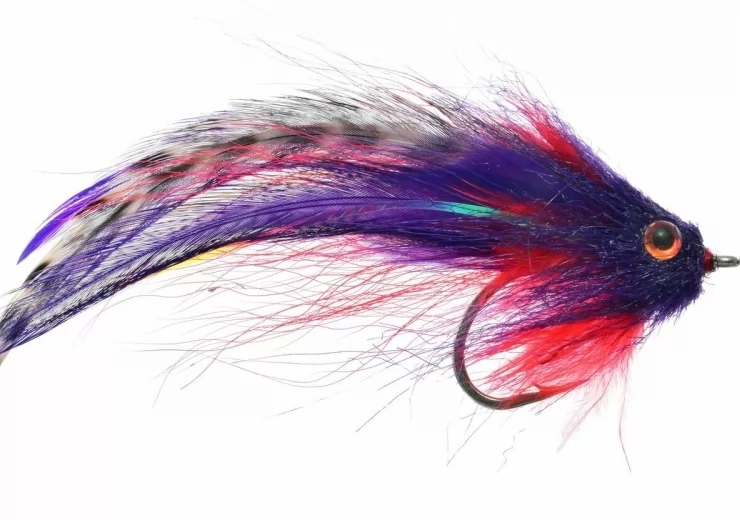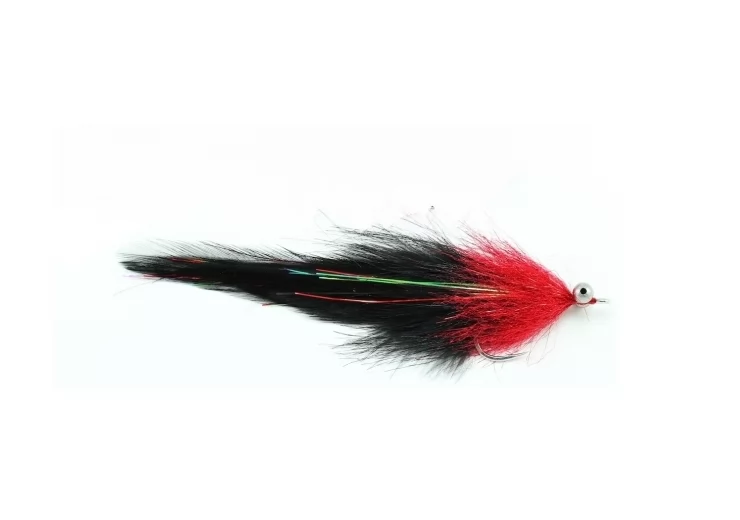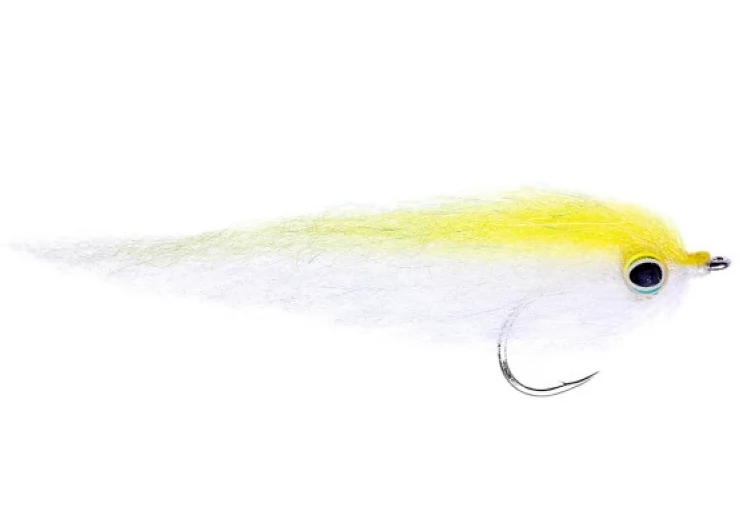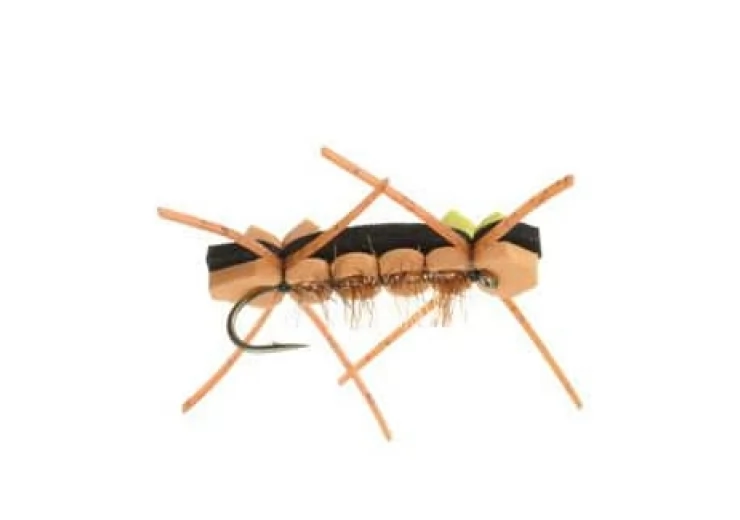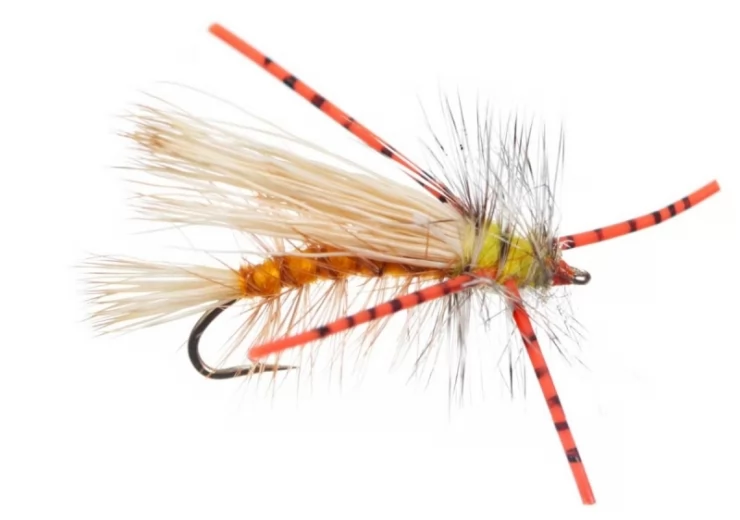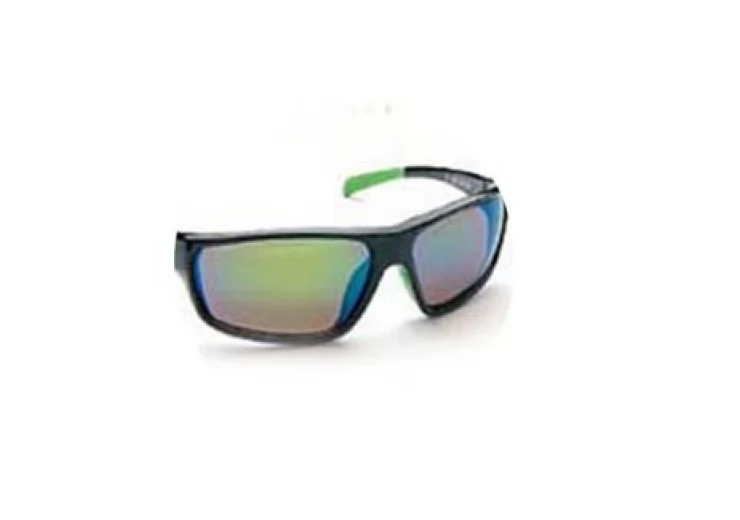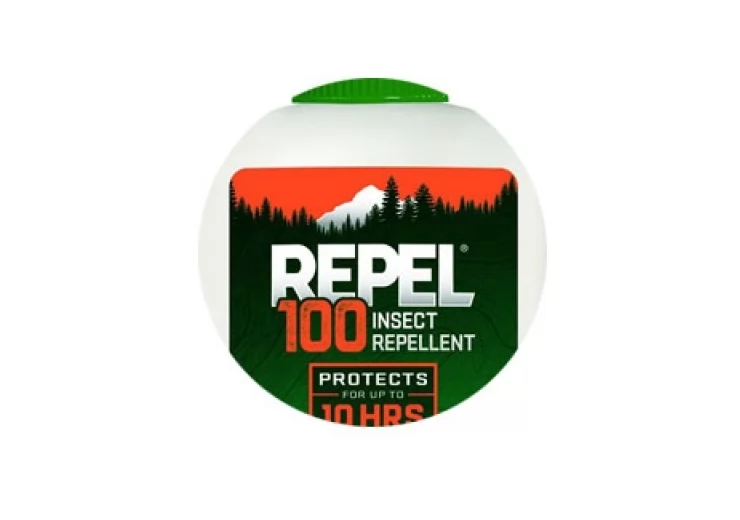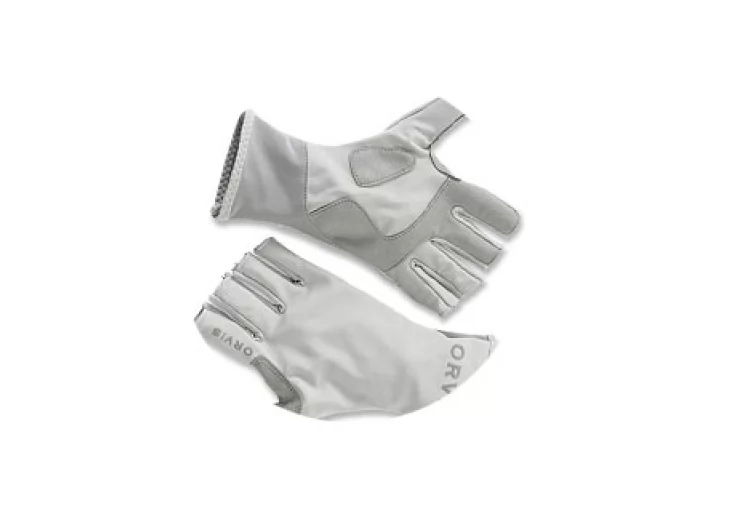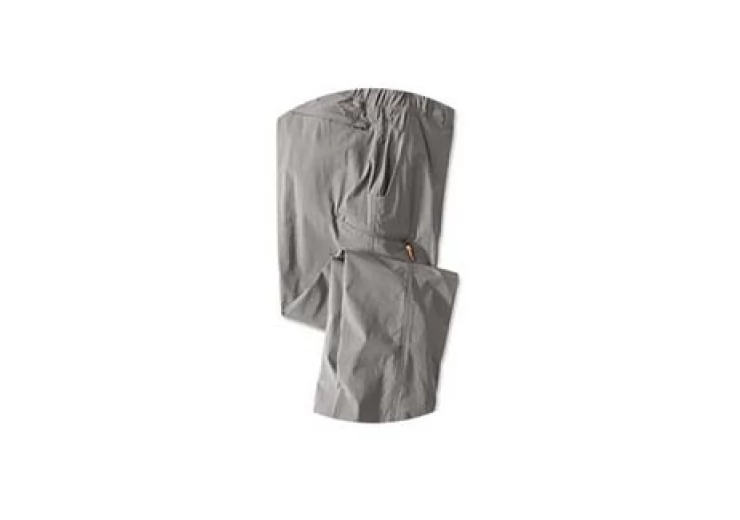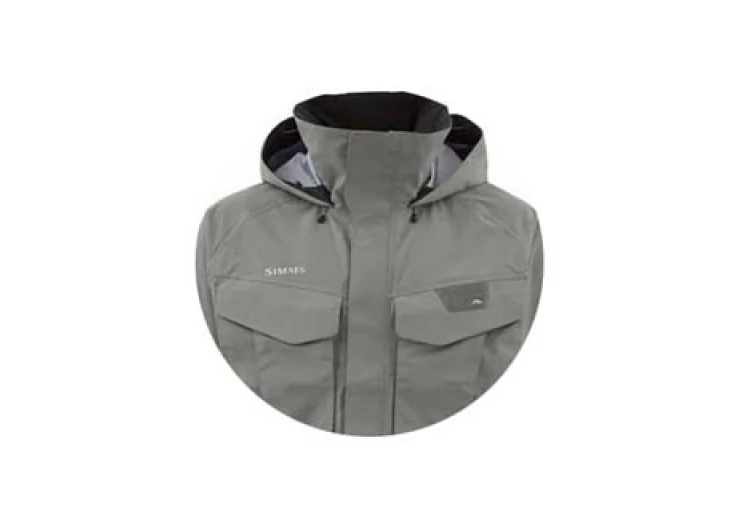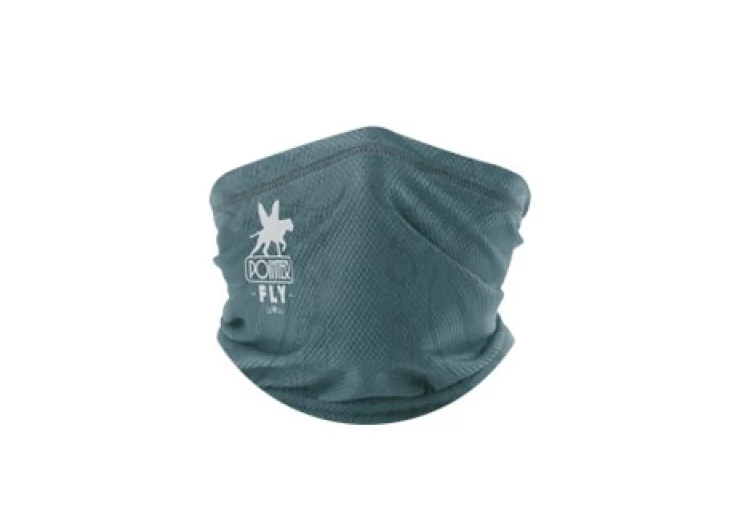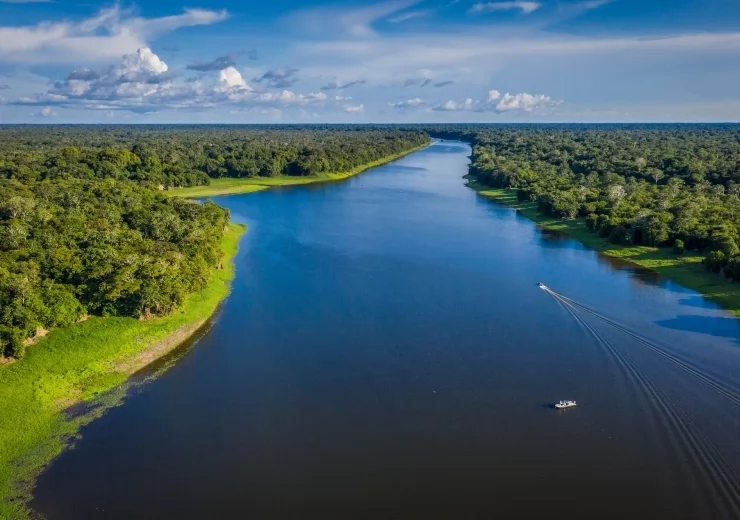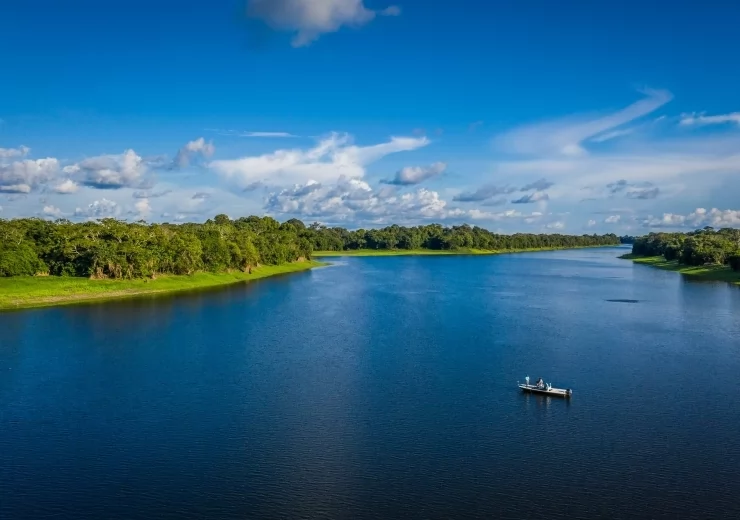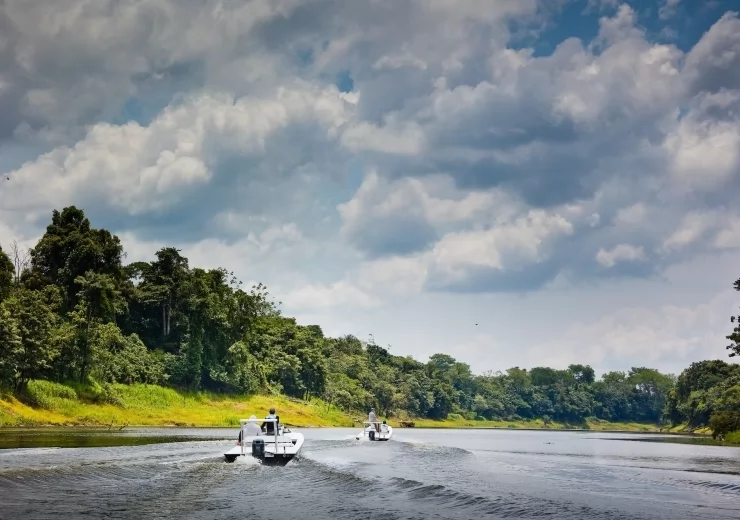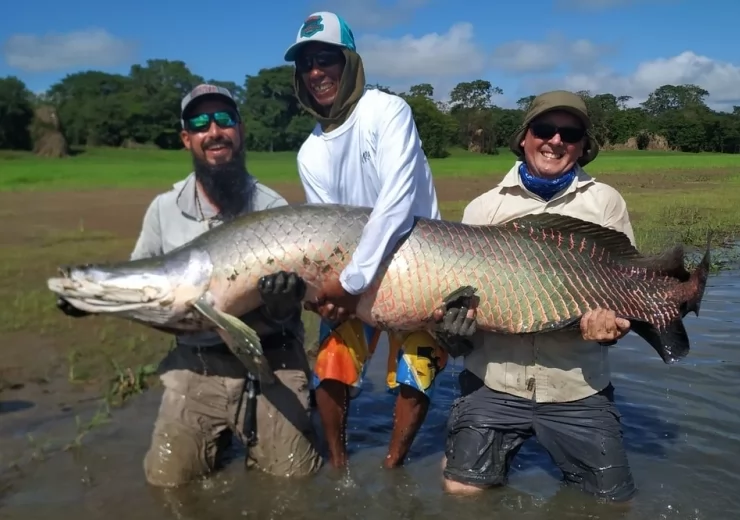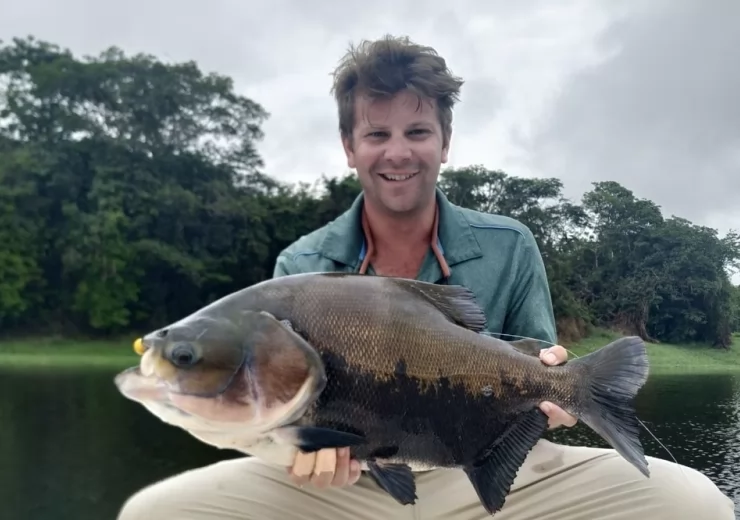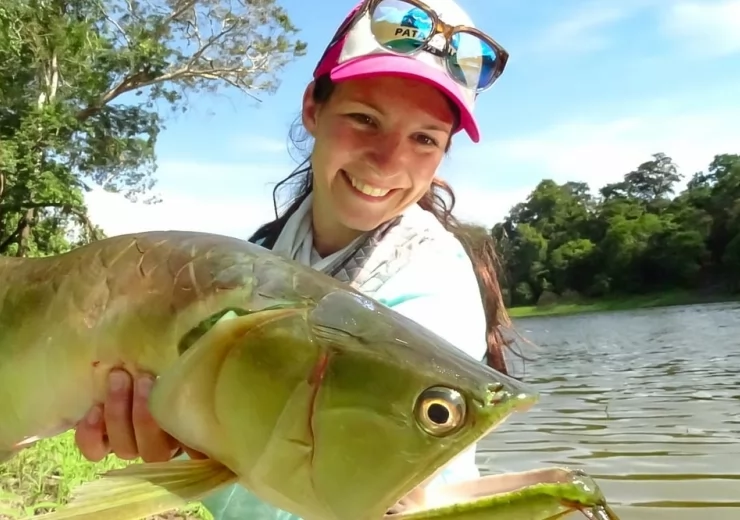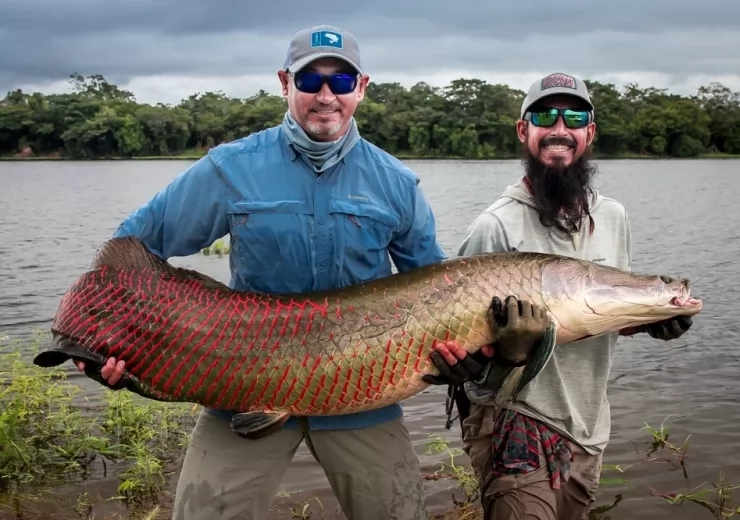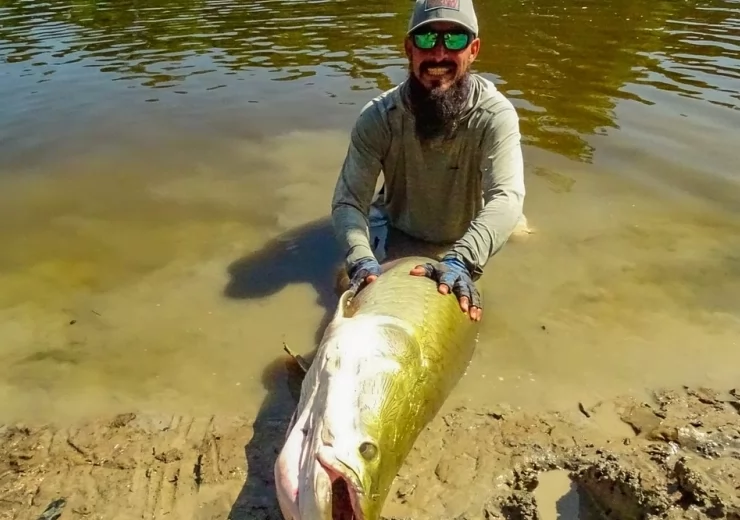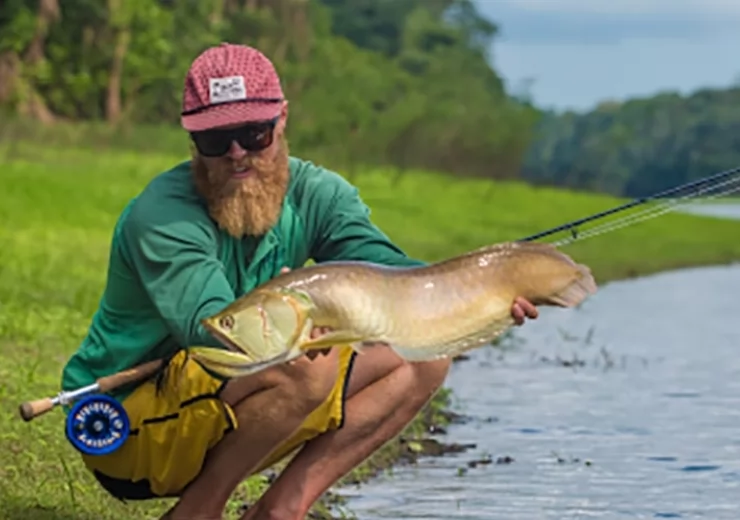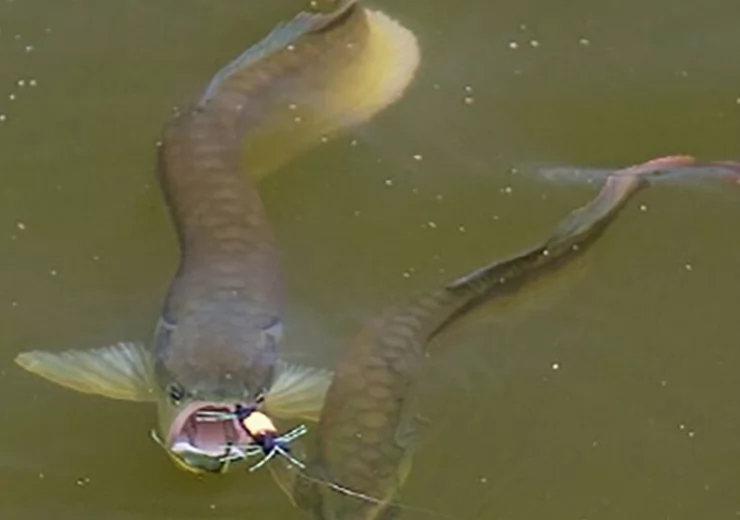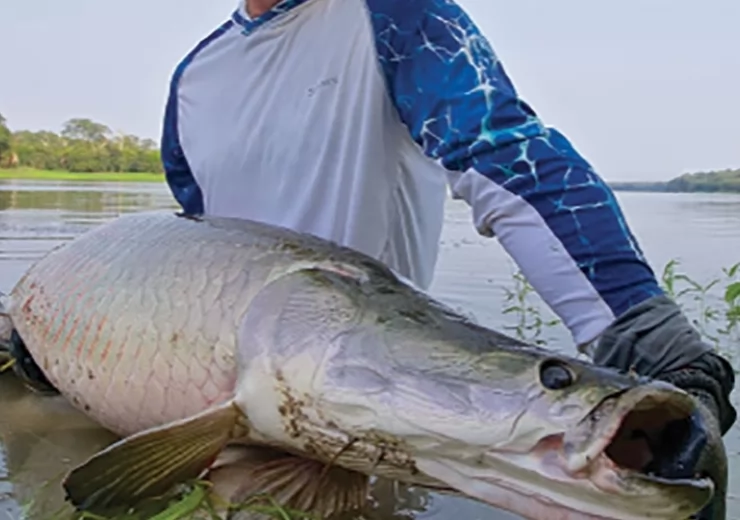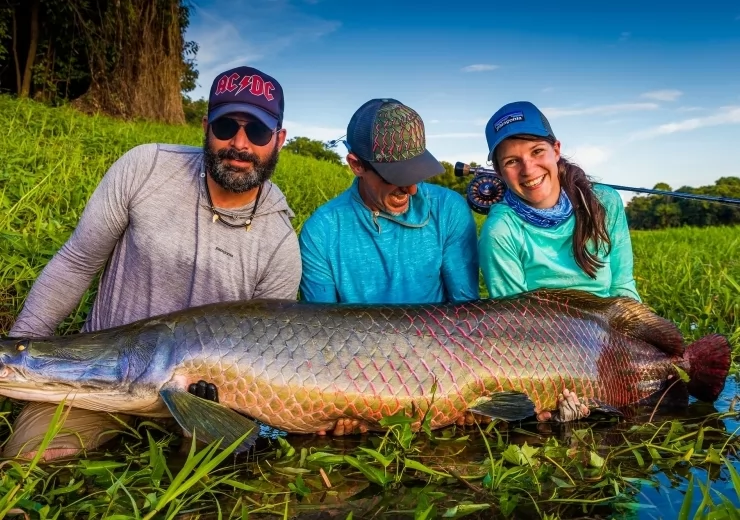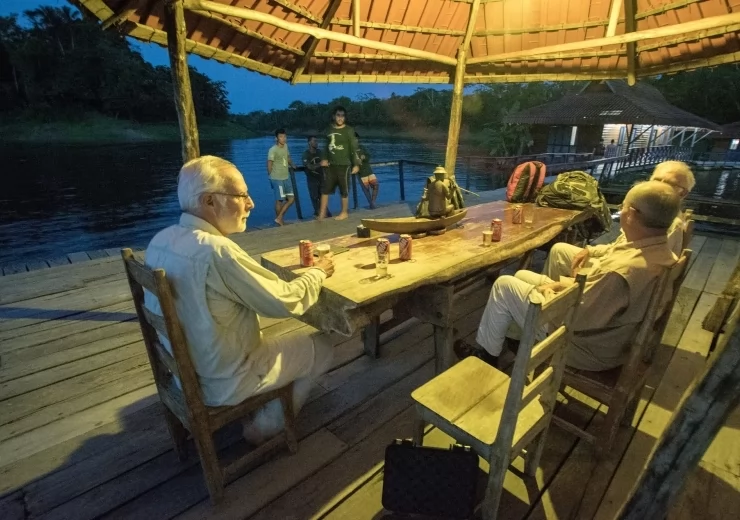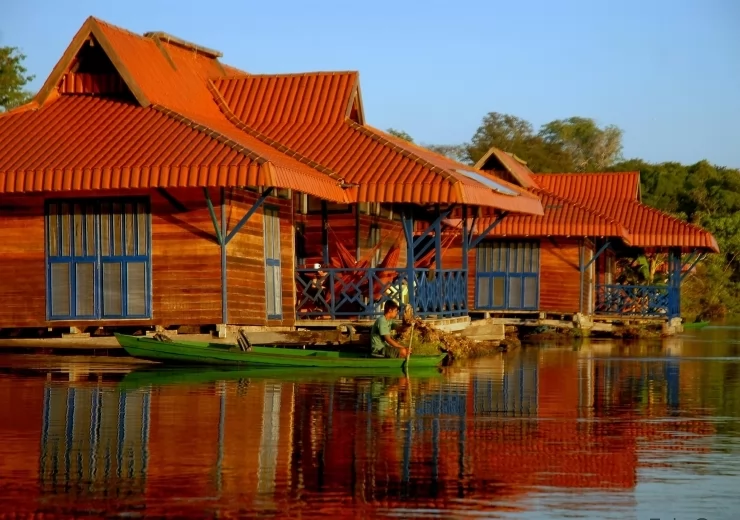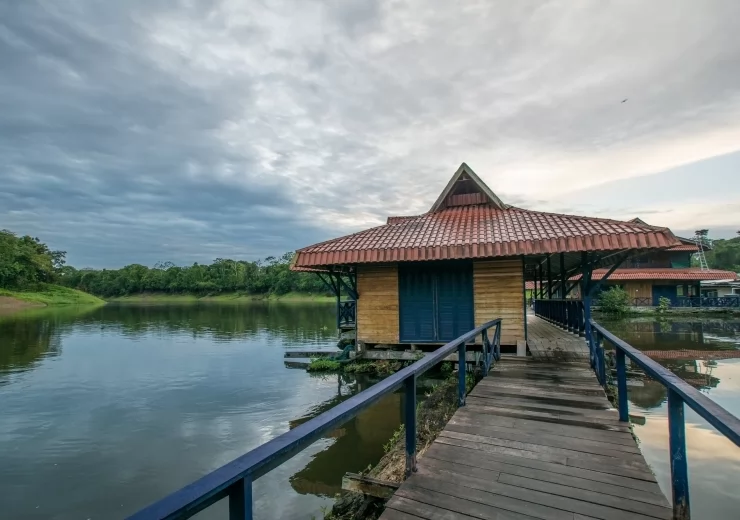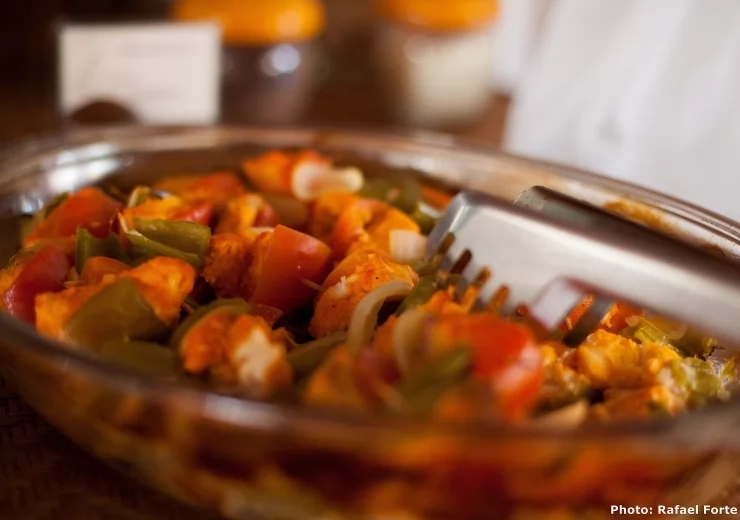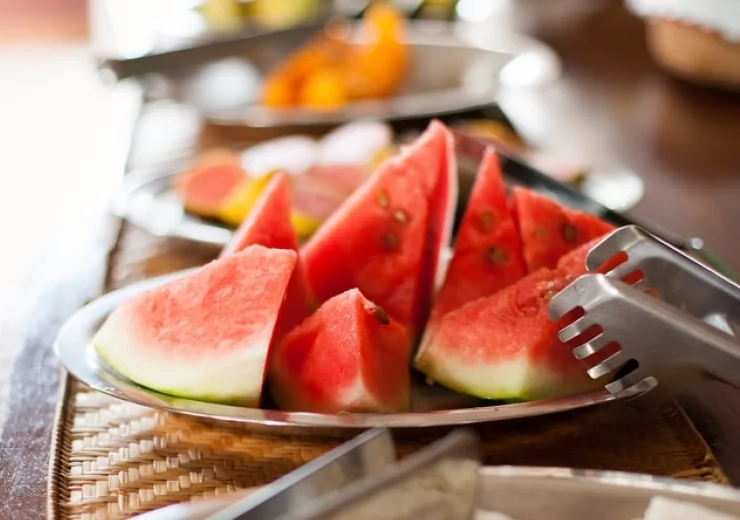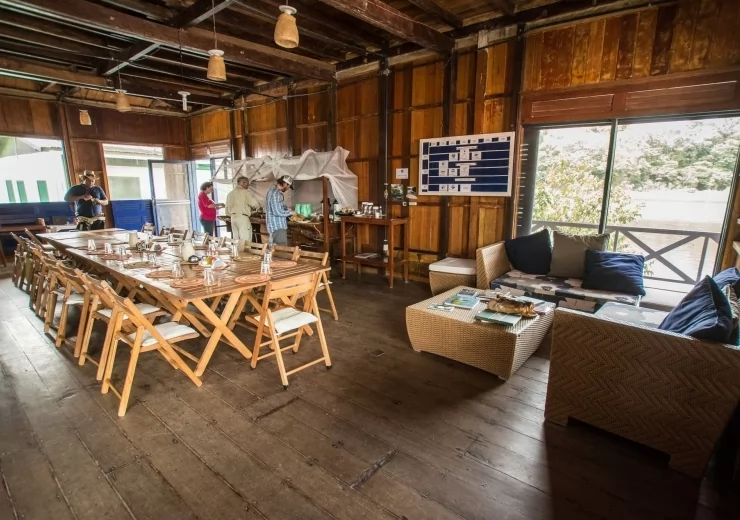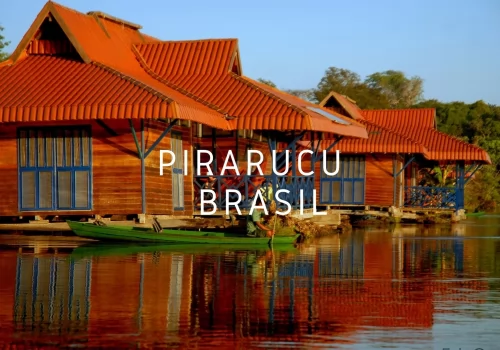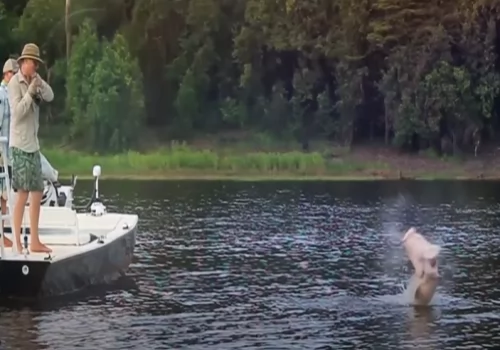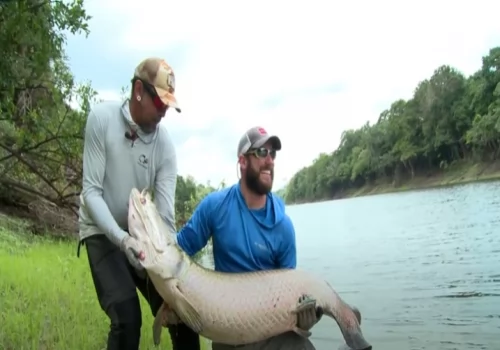Gear and equipment
PEACOCK BASS
Yellow species: These smaller peacock bass range in size from 2 to 8 pounds, and act much like their larger cousins found elsewhere in the Amazon. When found, they are usually busting bait along the shorelines.
GEAR
6/7 weight with smaller poppers or streamers on a floating line.
RODS
6-7 weight single-handed rods are good to have for the Arowana (and if around, the Tambaqui and Peacock Bass). For Arapaima, bigger rods in the 10 to 12 weight range are best as these fish can range from 100-400 pounds. It is best to have at least three rods rigged with different lines and/or flies in the boat, one set up for arapaima and one or more for the other species. We recommend having one 7wt rod with a floating line for the Arowana, one 10/11 weight rod for the smaller Arapaima with intermediate line and a 12 weight rod for the Giant Arapaima rigged with a 400-600g sinking line.
Please plan on bringing an extra backup rod. Powerful rods with a strong butt section are recommended.
REELS
As with rods, reels that have been designed for saltwater fly-fishing are the best choice. These jungle fish will test your stripping fingers more than your reel, but in the event you can get them on the reel before they get into the wood, reels with strong smooth drags are recommended. Bring a trusted reel that you feel comfortable with. Weight of the reel is important also since you will be casting a lot. 30-pound backing is required. We recommend the Silver King reels from Nautilus.
LINES
Most of the Arapaima fishing is done dredging the depths, so sinking lines are a must, such as a fast sinking sink-tip 24-foot 400 to 600 grain. We strongly suggest you bring at least two back up fly lines, as the the Pirahnas on occasion will bite your line while stripping in or fighting a fish. For the floating and intermediate lines, weight forward lines designed specifically for the tropics and saltwater are what you want. Rio Outbound Tropical Short or comparable, ultra-aggressive, warm water fly lines hands-down work the best. Another amazing line is the Rio Tropical Out bound Short clear intermediate tip line, the 30ft INT/15ft Clear.
Full floating Tropical Outbound Shorts are excellent for effortlessly throwing giant wind resistant poppers and baitfish streamers. Do not bring cold water floating lines, as the hot weather makes these lines soft and gummy.
Important Note. Bring 50-80lbs core resistant fly flines. The Rio Leviathan, Outbound and the Scientific Anglers Titan are good choices.
For the Arawana and Peacocks bring a warm water floating 6/7wt line, good for throwing large dry flies and small baitfish.
LEADERS
Arapaima: Segar 60-80# (non-stretch) or 80-100# Flouro – leaders will be 5-7’ long straight with no butt section or tippet. For the smaller Arapaima bring spools of 20, 30, 40 # fluorocarbon also tied straight leaders of 5-7’ in length.
Arawana, Peacock & Tambiqui: Require longer 8-9 foot leaders tapering down to 12-20#.
FLIES
All Arapaima: Fishing is done using baitfish, patterns of all various weights and lengths. There is a new world here to discover. For baitfish imitations, streamers in white/yellow, solid black with glitter, black /purple and black/red, really any combination of these colors are very effective.
Large Arapaima, we need heavily dressed flies in lengths from 4 to 12 inches, with good action in the water, in barbless 6/0 to 8/0 (high quality hooks as Tiemco600SP or the Onwer Aki) are required.
As for patterns, the most typical flies used are synthetic material streamers such as the Glimmer Minnow and the Sardina Cruiser. However many baitfish imitations have proved to be very successful: Puglisi Streamers in medium to very big sizes, Whistlers, Umpqua’ s Jungle Love and Tarpon Snake, Decievers and Half and Half’s. Imagine that arapaima can eat a baitfish from up to 10 inches!! So plan to have big streamers in clear colors mixing with yellow/red/orange and also darker colors as black&red and combinations.
Small Arapaima: Same as above but tied on 4/0-6/0 hooks. Best to have the strongest and sharpest hooks available. Arawana. Peacocks, Tambaqui:Big foam poppers and divers as well as very big rubber leg dry flies like Chernobyl Ants, beetles and cockroaches are fun to fish. It is a good idea to have a few fruit flies in case you get into a big school of Tambaqui.
